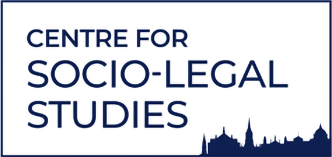
Paratexts

Biber (et alia) imbibe a dazzling array of matter, of part objects, fragments, cabinets, boxes, belts, bodies, passports, signatures, beads, treaties, intimate letters, profiles, video clips, in a bricolage of glimpses, glances and gleanings of a juridical sensibility that dissolves textuality into the environment that produced it and the events that enact it. Documents too, as feral artist Carey Young, amongst others, shows in this volume, are also art works, sensible images, sensory signs. Research focuses on the objects and other apparitions that manifest the performance of justice and injustice, which intervene and interrupt the regimentations of the page, the black and white of the printed text, with ‘le goût d’archive’, with affect, colour and sensibility. Understood as ‘a multimedia artefact’ the document can be anything that notes, records, inscribes or remains and so expands exponentially the archive, library, chambers, costumes and books that relay law and lore, the explicit and tacit, seen and felt dimensions of juristic iterations.
The collection can be approached best through the wild variety and kinds of questions that it poses. Is an antelope a document? Yes. Can a cow be a promissory note? Cheque. Are words scratched with a pen knife on a tractor fender capable of being a valid will? Can a cabinet and a box be deemed academic publications? Is joinery research? Can wampum bead belts be title deeds to property? Is a Treaty housed behind glass in a museum still a Treaty? Extending into digital humanities, is a smart phone text message a document? Can emojis stalk and harass? As Biber expounds in her own chapter on eccentric last wills and testaments, judges have had to conjure documents from suicide notes, the inside of an eggshell, a nurse’s petticoat, a poem, and grafiti on a wall. This leads her in part to propound a ‘debunk[ing] of the perception that the law clings to archaic formalities about documents’. (p. 180) Theory and practice, art and artisan join in the endeavour of re-membering the life that lies dead in the document. An optimistic philolegalist, Biber’s project is to expand how we understand the materiality, the aura, affect, artisanal and artistic aspects of documentation. Thus, returning to her favoured example of the antelope, its documentality is not merely a matter of ruminant cloved hoof ontology but of google earth which can now track, register, classify and store the path of moveable bodies and, with heat signatures and infrared reflectography, the tracks that they inscribe, day and night, on the surface of the earth. The diagrammatology of fauns and fauna.
Legal documents belong within and as part of material culture. Addressed from such a perspective, Derrida’s il n’y a pas de hors-texte becomes the equally catallactic there is no immateriality. From the collision of sub-atomic particles to the roar of blood and flow of air to the horsehair that backs the verso of a manuscript, what is real is what manifests. Everything else, nothing in other words, is religion. As part of what appears, graphos, law’s documents, belong within the accelerated and expanded nomos of materiality and join what Derrida regarded as the generality of writing, and addressed in part as the book of the world. It is the great virtue of Law’s Documents that it moves beyond biblical writ, pen and ink hermeneutics, matriculation and metaphora, to examine the animation of normativity. This allows for the beginnings of a remediation of the juridical, a recognition of the novel modes of its internet relay, corporeal and imaginal presences, but also a reorientation directed towards a sensory epistemology and an expanded realm of sensibilities. Access through affect and art, activates rage and sorrow at injustices, but also gives sensible form, depiction, colour, sound and life to multiple scenes, events and practices. Art in collision with and expression of law, allows for a more inclusive sensibility of the norm. A video short relays an artist’s road trip from Melbourne to native Kamilaroi lands, an exhibition remediates the failures of the prison system through miscarriages of justice reutilised as a visual epistemology that curates the evidence of the viscera of incarceration. Nyungar Elders bring the archive to life through the release of ancestor’s letters and their return to their indigenous sources as graphic epistolations of lived experience. An illicit camera peeks through cracks in the wall, through windows and behind the columns of the Belgium Palais de Justice to peer at what women advocates and judges are doing and sounding during their everydays in the courthouse.

